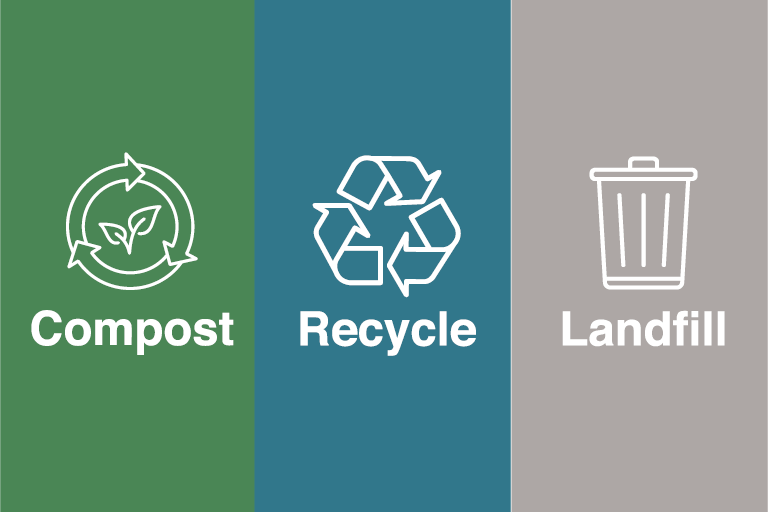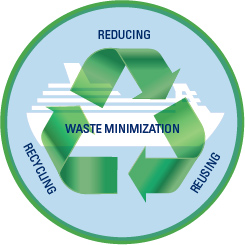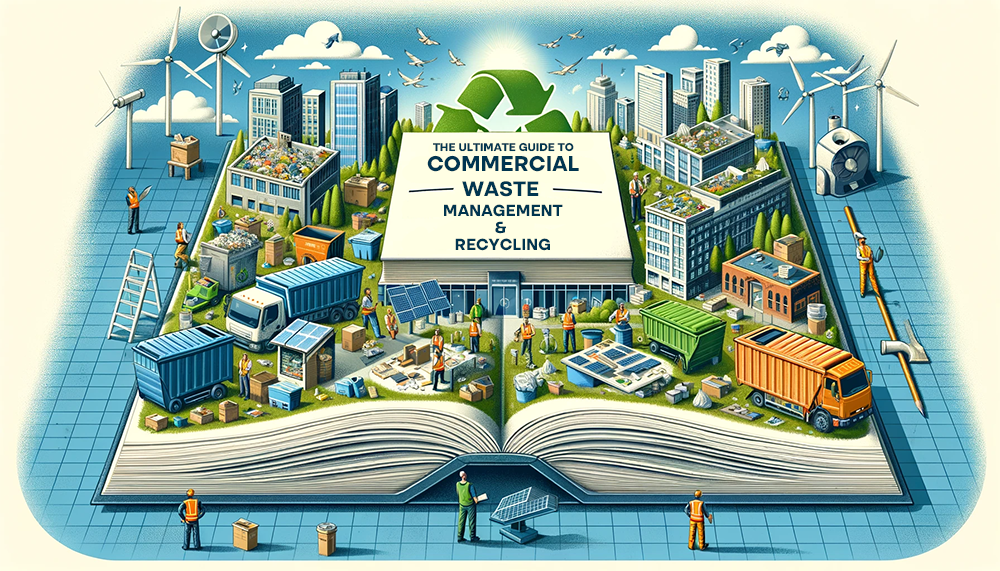Checking Out Different Kinds Of Waste in Modern Waste Monitoring Systems
The contemporary landscape of waste monitoring involves navigating a complicated selection of waste types, each requiring specialized handling and disposal approaches to alleviate ecological influences. Metropolitan solid waste, contaminated materials, electronic waste, and organic waste each present unique obstacles and possibilities for source recovery. Cutting-edge solutions such as smart waste bins and waste-to-energy innovations are becoming critical tools in improving performance and sustainability. Understanding these waste types is vital for promoting public understanding and encouraging energetic involvement in sustainable techniques. What approaches can efficiently resolve these varied sorts of waste while promoting a circular economic situation?
Metropolitan Strong Waste
Local solid waste, commonly described as house garbage or garbage, incorporates a variety of thrown out materials generated by residential, business, and institutional sources within a municipality. This waste stream normally includes items such as product packaging, food scraps, yard trimmings, paper, plastics, fabrics, and discarded family items. The monitoring of municipal strong waste is an essential part of metropolitan planning and public health and wellness, requiring reliable collection, transport, and disposal systems.
Reliable waste monitoring systems are created to decrease ecological impact while making the most of resource recovery. This often includes a mix of methods including recycling, landfilling, and composting. Reusing programs target materials like paper, glass, steels, and specific plastics, diverting them from land fills and reestablishing them right into the manufacturing cycle. Composting organic waste, such as food scraps and yard trimmings, not just lowers garbage dump use however also produces valuable soil modifications.
Communities need to also resolve the logistical and economic challenges associated with waste monitoring. Executing pay-as-you-throw systems, boosting public recognition, and buying innovation can substantially improve waste diversion prices. By integrating these techniques, communities can promote lasting neighborhoods, minimize greenhouse gas discharges, and conserve natural deposits.
Hazardous Waste

Efficient harmful waste administration includes a number of critical steps: identification, disposal, therapy, and segregation. Segregation guarantees that unsafe materials are stored independently from non-hazardous waste to protect against cross-contamination.
Governing structures, such as the Source Conservation and Recuperation Act (RCRA) in the United States, give guidelines and standards for contaminated materials administration. Adherence to these policies, combined with innovations in waste therapy modern technologies, is necessary in alleviating the dangers connected with harmful waste.
Electronic Waste
Electronic waste, commonly described as e-waste, stands for a quickly growing obstacle in waste administration systems worldwide. This sort of waste encompasses disposed of electronic tools and devices such as smart devices, computer systems, televisions, and various other electronic devices. The rapid pace of technical improvement, coupled with lowering item life-spans and consumer need for the most current devices, has actually significantly increased the quantity of e-waste generated annually.
E-waste is especially bothersome because of its complex structure, usually including unsafe compounds like cadmium, mercury, and lead, which posture significant ecological and health threats otherwise effectively managed. Alternatively, e-waste also consists of beneficial materials such as silver, copper, and gold, which can be recovered and recycled. The dual nature of e-waste-- both important and harmful-- demands specialized handling, recycling, and disposal procedures.
Effective e-waste administration includes rigid governing structures, durable collection systems, and advanced reusing technologies. Public awareness and involvement are vital, as improper disposal practices, such as illegal disposing and informal recycling, exacerbate environmental contamination and carcinogen. Consequently, enhancing e-waste monitoring methods is essential for mitigating ecological impact and recouping beneficial resources in a progressively electronic globe.

Organic Waste
Organic waste, consisting of kitchen area scraps, lawn trimmings, and agricultural residues, stands for a substantial section of the international waste stream. This kind of waste is naturally degradable, indicating it can be damaged down by bacteria right into less complex natural substances. In spite of its potential for all-natural decay, incorrect management of natural waste can bring about adverse environmental influences, consisting of the emission of greenhouse gases such as methane, which add to environment adjustment.
Efficient monitoring of natural waste is critical for reducing these environmental effects (recycling lives services). Composting is an extensively adopted technique, changing organic waste into nutrient-rich compost that can boost soil health and wellness and farming productivity. Furthermore, anaerobic food digestion is an arising innovation that converts organic waste into biogas, a sustainable power source, and digestate, which can be made use of as plant food
Municipalities and waste management entities should apply durable organic waste collection and therapy programs to take full advantage of the advantages of these procedures. Public education campaigns can likewise play an essential duty in encouraging households and companies to different natural waste from various other sorts of waste. By focusing on the monitoring of organic waste, hop over to these guys cultures can lower land fill usage, reduced greenhouse gas emissions, and produce important by-products for agricultural use.

Ingenious Waste Management
In the realm of waste monitoring, innovative methods are changing just how societies handle their refuse, going for sustainability and effectiveness. These innovations encompass a variety of technologies and techniques that improve recycling rates, decrease garbage dump reliance, and lower ecological effect. One popular technology is the application of clever waste bins geared up with sensors that keep track of fill levels and optimize collection courses. This not just minimizes gas usage however additionally decreases greenhouse gas exhausts.
An additional significant development is the fostering of waste-to-energy (WtE) modern technologies. By transforming non-recyclable waste right into functional energy via processes such as incineration and anaerobic digestion, WtE minimizes landfill burden and gives a renewable resource source. Moreover, developments in chemical reusing enable the breakdown of complicated plastics into their initial monomers, allowing the creation of brand-new, premium plastic items.
Additionally, the round economic situation model is getting traction, highlighting the layout of items and systems that focus on reusability and source effectiveness. This all natural approach motivates industries to decrease waste generation from the outset. With these cutting-edge strategies, contemporary waste administration systems are not only addressing the instant look at this web-site challenges of garbage disposal however likewise leading the way for a more lasting future.
Verdict
An extensive understanding of local solid waste, harmful waste, digital waste, and organic waste, paired with the implementation of ingenious waste monitoring solutions, is imperative for reducing ecological effects. Integrating modern technologies such as smart waste bins and waste-to-energy systems can enhance performance and sustainability. Effective waste administration methods not just foster source recuperation however additionally advertise public recognition and engagement, ultimately adding to the advancement of a round economy.
The contemporary landscape of waste management entails browsing a complex variety of waste kinds, each needing specialized handling and disposal techniques to reduce environmental influences. Local solid waste, dangerous waste, electronic waste, and organic waste each existing distinctive obstacles and possibilities for resource recovery.Digital waste, commonly referred to as e-waste, go to my site stands for a rapidly expanding difficulty in waste administration systems worldwide. Via these innovative strategies, modern-day waste administration systems are not only dealing with the prompt difficulties of waste disposal but also leading the method for a more lasting future.
A thorough understanding of community strong waste, dangerous waste, electronic waste, and organic waste, paired with the execution of innovative waste monitoring options, is essential for mitigating environmental impacts. (recycling lives services)